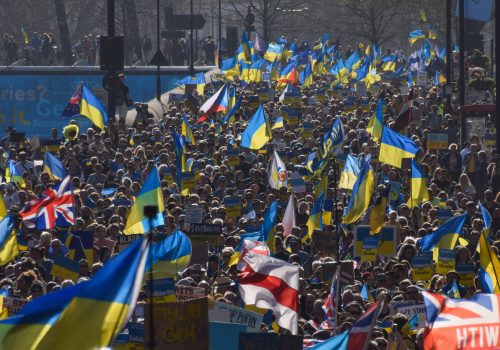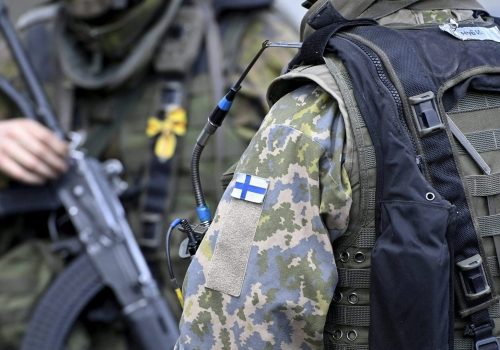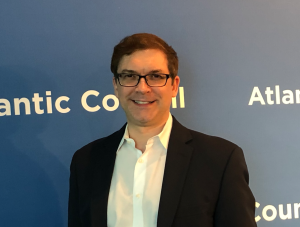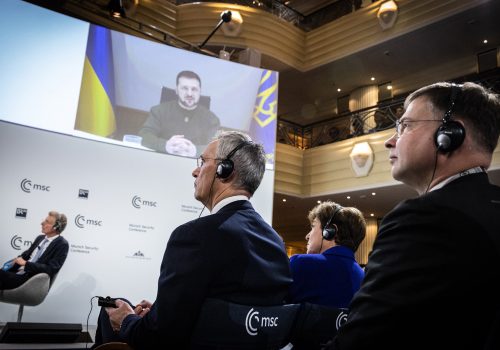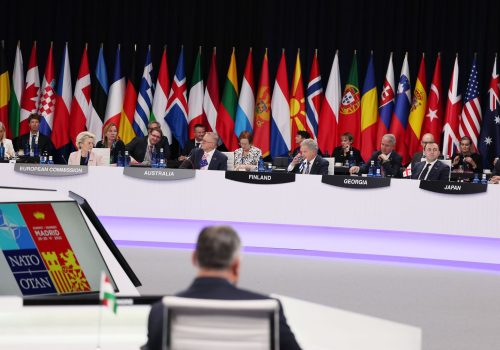Defining success for NATO’s Vilnius summit: A primer
Success at NATO’s Vilnius summit will require:
- Ensuring Ukraine is in as strong a position as possible—politically, militarily, and territorially—to prevail in its war with Russia
- Strengthening Ukraine’s relationship with NATO, including by defining a measurable path to membership
- Following through on commitments made at NATO’s Madrid summit for a larger number of more ready forces to build deterrence for NATO territory
- Enhancing NATO’s nuclear deterrence while more intently integrating its nuclear and conventional deterrence strategies
- Committing to increased defense spending, potentially by redefining the target of 2 percent of GDP as a floor, not a ceiling
- Taking concrete steps to confront the systemic challenge from China through intensified transatlantic-transpacific cooperation
- Welcoming Sweden as a formal member of NATO, quickly integrating Finland and Sweden into core Alliance business, and choosing a new cardinal direction for NATO partnerships
- Extending NATO Secretary General Jens Stoltenberg’s tenure, or replacing him with a candidate who can confidently manage a wartime alliance while communicating a vision for NATO’s next era
Table of contents
Introduction
The Vilnius summit and the war in Ukraine
Strengthening deterrence and defense at Vilnius
Addressing the nuclear dimension of NATO deterrence
A new defense investment pledge at Vilnius
Addressing China at the Vilnius summit
NATO’s other critical decisions at Vilnius
Conclusion
Introduction
When a Vilnius summit was agreed two years ago,1NATO Brussels Summit Communique, NATO, June 14, 2021, Paragraph 79, https://www.nato.int/cps/en/natolive/news_185000.htm much of the NATO community anticipated an undramatic gathering, nestled between a monumental 2022 meeting in Madrid to unveil the Alliance’s new Strategic Concept and NATO’s seventy-fifth anniversary summit in 2024. While Madrid did, in fact, prove historic with Russia’s war in Ukraine as a backdrop and with Finland and Sweden formally invited to join ranks, the agenda for Vilnius is shaping up to be equally important—grappling, like Madrid, with a devastating war of immense destruction in the heart of Europe, but in a setting just a few dozen miles from the border of Russia-aligned Belarus, where the Kremlin plans to station nuclear arms.2See Lukashenka’s statement of March 31, 2023: https://www.reuters.com/world/europe/belarus-lukashenko-says-russian-nuclear-arms-needed-deter-threats-west-2023-03-31/
A successful NATO summit in July requires significant progress on a host of NATO’s political and military priorities, especially those enumerated at Madrid. Yet the first condition for success will be tied to Ukraine’s progress in driving invading Russian forces from its territory so that Kyiv is able to negotiate a permanent peace with Russia. Such a scenario—fully realized or tangibly in the offing—depends on ramped-up military support to Kyiv from the United States and its allies, including more operational flexibility for Ukrainian forces to target Russian firing systems inside Russia.
Getting to Vilnius with all allies unified behind the goal of enabling Ukraine’s victory is the foremost strategic priority for the Alliance. An equal, related goal is to underwrite NATO’s political credibility as a champion and guarantor of the democratic values of its members. NATO is not the sole organization nurturing the liberal global order, but it is a crucial one.
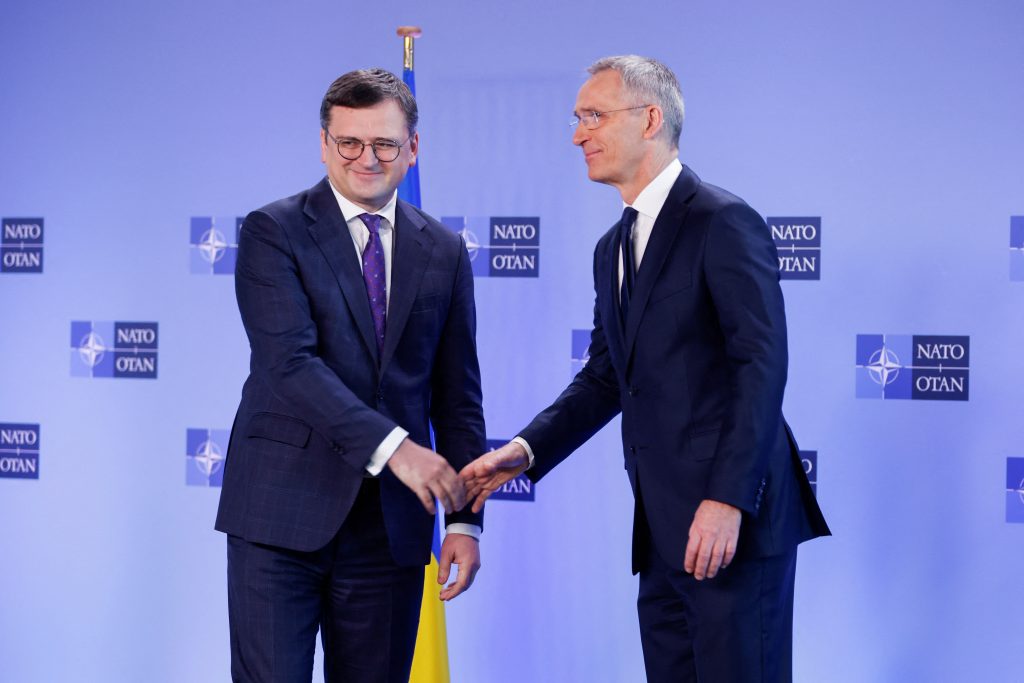
Getting to Vilnius with all allies unified behind the goal of enabling Ukraine’s victory is the foremost strategic priority for the Alliance.
NATO at Vilnius must also take purposeful steps to close the gap between collective defense requirements and available capabilities. With Moscow’s revanchist intentions clearer today than at any time since the end of the Cold War, committing to a new defense investment pledge3See Paragraph 19 of NATO ‘s Madrid Summit Declaration (June 29, 2022), https://www.nato.int/cps/en/natohq/official_texts_196951.htm beyond 2024 by updating the controversial 2 percent guideline adopted at the 2014 Wales Summit is critical. The stocks of arms and matériel flowing to Ukraine must be replenished such that NATO’s collective defense is not weakened. Investing in emerging technologies to stay ahead of strategic competitors is just as important.
Considerable resources will be needed to implement NATO’s ambitious Concept for Deterrence and Defense of the Euro-Atlantic Area (DDA), including new regional plans. Focus on NATO’s Warfighting Capstone Concept (NWCC) will require emphasis at Vilnius as well, as will the nuclear dimension of NATO’s deterrence strategy. No less important are the resilience of civil infrastructure, military mobility, cyber networks, and logistics.
China also must be high on the Vilnius agenda. Xi Jinping has centralized unprecedented, open-ended power behind Beijing’s growing footprint in Europe and close alignment with the Kremlin. Chinese ownership of European infrastructure and active diplomatic pressure on allies are key concerns, as is China’s increasingly explicit support for the Kremlin’s territorial ambitions in Ukraine.4See BBC online article (March 20, 2023) “Ukraine War: What Support is China Giving Russia?” https://www.bbc.com/news/60571253. BBC describes China’s evasion of sanctions to provide Russia with advanced technology for weapons systems and other non-lethal support. It also speculates on impending overt or covert weapons transfers. Politico also reports on Chinese body armor components found on battlefields (March 28, 2023) “China-linked Russian Body Armor is Landing on the Battlefield in Ukraine,” https://www.politico.com/news/2023/03/28/russian-body-armor-china-00089114 China’s diplomatic rhetoric neither condemn Russia’s invasion nor calls for its withdrawal to Russia’s legal borders. See Al Jazeera online article (February 24, 2023) “All You Need to Know About China’s Plan for Russia-Ukraine Talks,” https://www.aljazeera.com/news/2023/2/24/all-you-need-to-know-about-chinas-plan-for-russia-ukraine-war The inclusion of NATO’s Indo-Pacific partners in the summit agenda must move from symbolism to practical measures.
Alliance leaders expect Sweden at the table as a full Alliance member in Vilnius: both Hungary5Petr Tůma “Hungary Has Approved Finland Joining NATO. But its Delays Raise Deeper Concerns,” March 28, 2023, https://www.atlanticcouncil.org/blogs/new-atlanticist/hungary-has-approved-finland-joining-nato-but-its-delays-raise-deeper-concerns/ and Turkey6See the Atlantic Council’s “Experts React: Turkey Moves to Approve Finland’s NATO Membership. Where Does That Leave Sweden?” March 18, 2023, https://www.atlanticcouncil.org/blogs/new-atlanticist/experts-react-turkey-moves-to-approve-finlands-nato-membership-where-does-that-leave-sweden/ approved Finland’s accession in March, while delaying action on Swedish accession amid their ongoing political objections. Whether or not a negotiated way ahead on Sweden is agreed by the time of the Vilnius gathering, the summit should fast-track the ability of Finland and Sweden to participate in core Alliance business, to include operational and defense planning activities aimed at increasing Nordic-Baltic security.
The other side of that coin is redefining NATO partnership initiatives as Finland and Sweden graduate to membership, including defining clearer paths to membership for aspirants, especially Ukraine. Options for a new partnership concept could include renewed focus on neutral European states like Switzerland, Austria, and Ireland or intensifying relationships with Japan, Australia, New Zealand, and the Republic of Korea.
Heads of state and government must also choose a new secretary general to replace Jens Stoltenberg—or choose to extend his role. Given Stoltenberg’s remarkable tenure, which started just after Russia’s 2014 invasion of Crimea, the choice will be a profound one.
The Vilnius summit and the war in Ukraine
NATO is not at war in Ukraine but is unquestionably a stakeholder in the conflict. The Alliance has declared its staunch solidarity with Kyiv. Its leaders have backed President Volodymyr Zelenskyy’s goal of wresting all seized Ukrainian territory from Russian control, his justified demands for rebuilding Ukraine’s infrastructure and society, and his calls to hold Russia and its war criminals accountable. The Western world has rejected Russia’s aggression in every NATO and European Union forum and in three overwhelming United Nations General Assembly resolutions,7On March 2, 2022 the UNGA adopted a resolution 141 – 5 condemning Russia’s invasion of Ukraine (see UNGA resolution condemning Russia-Ukraine war voting 2022, https://www.statista.com/statistics/1293918/unga-resolution-condemning-russia-ukraine-war-voting/ On March 24, 2022 the UNGA voted 140 – 5 demanding civilian protection and humanitarian access in Ukraine (see Ukraine: General Assembly passes resolution demanding aid access, by large majority, https://news.un.org/en/story/2022/03/1114632 On October 12, 2022 the UNGA in emergency session voted 143 – 5 Condemning the Russian Federation’s Annexation of 4 Eastern Ukrainian Regions (see With 143 Votes in Favour, 5 Against, General Assembly Adopts Resolution Condemning Russian Federation’s Annexation of Four Eastern Ukraine Regions, https://press.un.org/en/2022/ga12458.doc.htm) even amid concerns about the sympathies of the Global South.8Liz Sly, “A Global Divide on the Ukraine War is Deepening” The Washington Post, February 23, 2023, https://www.washingtonpost.com/world/2023/02/22/global-south-russia-war-divided/ NATO has been a vital platform for consensus and coordination among its allies and partners in all dimensions—military, economic, and diplomatic—working alongside the European Union and Group of Seven in unprecedented ways to support Ukraine in an integrated manner.
As a point of fact, no forces under NATO command have ever been stationed in Ukraine and no NATO operation has been conducted there. These truths make for a useful, arms-length counterfactual that the war is solely a conflict between Ukraine and Russia. That individual NATO allies, however, are supporting Ukraine with planning, intelligence, and matériel in a highly coordinated fashion makes NATO’s absence from the battlefield a distinction without a difference to Moscow. Zelenskyy himself has declared Ukraine a “de facto” member of the Alliance.9Robbie Gramer, Jack Detsch, and Amy Mackinnon, “After Putin’s Land Grab, Zelensky Wants to Fast-Track NATO Membership,” Foreign Policy, September 30, 2022, https://foreignpolicy.com/2022/09/30/russia-ukraine-nato-membership-zelensky/ And the Pentagon-initiated Ukraine Defense Contact Group is primarily a forum for NATO allies and partners. However unfairly, these dynamics invite the Kremlin to gaslight its sympathizers, terrorizing Ukraine while, contrary to verifiable facts, laughably10Juliana Kim, “Russia’s Foreign Minister Gets Laughed At Over Ukraine Remarks at a Global Conference,” National Public Radio, March 4, 2023, https://www.npr.org/2023/03/04/1161128415/russia-foreign-minister-lavrov-laughed-at declaring itself the victim of menacing Western aggression.
To date, unwavering Western unity in support of Ukraine has been the strategic key to success on the battlefield. Getting to Vilnius with that solidarity intact is a top priority. The longer the war rages, the more sensitive Western leaders will become to the imperative of public support. Vladimir Putin is counting on outlasting Western patience for support to Ukraine amid rising economic pressures, Kremlin-instigated energy volatility, persistent disinformation campaigns, and the uncertainty of elections in democratic societies. Thus, the most urgent requirement for NATO leaders is to commit to a quick end to the war by helping Ukraine win.
Some of the original caution in providing material support to Ukraine in fear of a Russian escalatory response has given way to a stream of increasingly impactful battlefield contributions, a dramatic and positive trend. To the credit of Ukraine’s backers, as the contours of the war have changed, so has the willingness of allies to increase support. Nevertheless, leaders continue to weigh, often for too long, the balance between providing more advanced weapons—or more tactical flexibility in battlefield employment of those weapons—and keeping all allies on-side. Greater stress must be placed on faster delivery of support, particularly lethal systems.
Ukraine’s immediate imperative is to stop the bombardment of its cities and critical infrastructure while giving its battlefield forces the wherewithal to combat attacking or entrenched Russian positions. That means disrupting or destroying Russian firing systems, many of which are inside Russian territory or at sea. The campaign to silence fires from beyond the battlefield must be undertaken, using precision to minimize collateral damage and the risk of escalation. Ramping up nonlethal support to Ukrainian forces is another top priority. More of such resources can be funded and supplied by NATO without risk of being formally drawn into the war.
When NATO leaders meet in Vilnius the delicate issue of Ukrainian membership will be in the air.11Lili Bayer, “NATO Treats Fine Line on Ukraine Membership,” Politico, https://www.politico.eu/article/ukraine-nato-membership-dmytro-kuleba-jens-stoltenberg-russia-war-military-assistance/ That Ukraine has demonstrated heroic commitment to Euro-Atlantic collective defense is unquestioned. NATO’s 2008 Bucharest Summit commitment12See NATO’s 2008 Bucharest Statement, https://www.nato.int/cps/en/natolive/official_texts_8443.htm that Ukraine and Georgia “will become members of NATO” is a black eye for the Alliance’s credibility that needs to be addressed in a meaningful way. It is not practical for NATO to commit to Article 5 protection until the war ends positively for Kyiv. Yet NATO must signal how a postwar Ukraine will be defended against future Russian aggression until full membership is realized.
NATO should craft a strong commitment to draw Ukraine permanently closer to the Alliance, with measurable criteria for joining along the lines of membership action plans13See NATO’s Membership Action Plan, https://www.nato.int/cps/en/natohq/topics_37356.htm for past applicants. Moreover, a well-resourced, multiyear assistance program should map out the transformation of Ukraine’s defense establishment with NATO combat systems, standards, training, logistics, accountability, and interoperability. Annual NATO-Ukrainian exercises should be added to NATO’s calendar, and Ukraine should be a full participant in NATO cyber-defense regimes.14A parallel European Union assistance program should extend to postwar mine clearing and reconstruction, restarting a vibrant Ukrainian economy, and assisting with the reforms essential to an enduring democracy.
Lastly, NATO allies and Kyiv must unite on clearer immediate and long-term strategic war aims and how to obtain them. A silent divergence has existed between Kyiv’s objective—shared by the majority of allies—of pushing Russian forces out of all Ukrainian territory, and a growing number of members who are becoming more equivocal about that central goal. Vilnius provides a venue for leaders to take stock and define a clearer common vision of genuine, lasting peace.
The bottom line is that success in Vilnius will require that Ukraine be in as strong a position as possible—politically, militarily, territorially—for NATO to effectively address the rest of its agenda. Moreover, strengthening Ukraine’s relationship to NATO, including by defining a measurable path to membership, is an essential criterion for success.
Strengthening deterrence and defense at Vilnius
After Ukraine, strengthening NATO’s deterrence and defense will be the most pressing business for heads of state and government in Vilnius. Consensus endorsement on major implementation steps must be reached in pursuit of leaders’ Madrid commitments.
Russia’s invasion of Crimea in 2014 impressed Alliance commanders with the urgent need to transform NATO’s deterrence and defense posture. Change was pursued steadily thereafter, but the senseless February 2022 attack on Ukraine—which made tangible heretofore theoretical threats to nearby NATO territory—galvanized political support and brought dramatic progress. A wholly transformed NATO force posture was drawn up by military leaders in the wake of Russia’s invasion and approved at Madrid in June 2022. Showing concrete progress on these groundbreaking Madrid decisions is a prerequisite for success at Vilnius.

The Madrid-Vilnius nexus marks, in a real sense, the end of the post-Cold War period for the Alliance.
What nations hope to accomplish at Vilnius is the first tranche of the Madrid-directed adaptation of the NATO Force Structure,15See NATO Force Structure, https://www.nato.int/cps/en/natohq/topics_69718.htm The NATO Force Structure is comprised of national and multinational forces nations provide to the Alliance for each specific exercise or operation, at various readiness levels. The new NATO Force Model is a major expansion of the forces being maintained by nations at high readiness levels. a posture that is markedly larger and more combat-credible than the previous one based around the NATO Response Force (NRF).
The Madrid-Vilnius nexus marks, in a real sense, the end of the post-Cold War period for the Alliance. For the past thirty years, NATO had steadily moved away from a heavy, forward force posture on the Alliance’s eastern borders to smaller forces at lower readiness levels oriented on crisis response operations beyond NATO territory, Afghanistan most prominently. Forward-deployed forces did not materialize again until 2014, when Russia seized Crimea; thereafter, only rotational battlegroups or “trip wire” forces were positioned on NATO’s eastern frontier. The size, response times, and rotational nature of the NRF epitomized this approach, with little force depth or sustainment capacity to speak of.
Decisions at Vilnius will be the critical steps toward implementing the long-term adaptation of the Alliance’s deterrence and defense posture. The NATO Force Model16See NATO’s Force Model, https://www.nato.int/nato_static_fl2014/assets/pdf/2022/6/pdf/220629-infographic-new-nato-force-model.pdf (NFM) is a new framework to focus allied force structure contributions on robust deterrence and defense, as well as NATO’s other core tasks of crisis response and cooperative security. The NFM provides a marked expansion of NATO’s readiness posture. It calls on nations to earmark several hundred thousand troops across all domains arrayed in a graduated readiness scheme. The NFM calls for several hundred thousand additional troops and supporting capabilities at varying readiness levels, including an Allied Reaction Force (ARF).17In contrast, the current NRF concept is to rapidly deploy up to 40,000, with initial elements deploying within 15 days. See NATO Response Force, https://www.nato.int/cps/en/natohq/topics_49755.htm. Also, see “The Secretary General’s Annual Report 2022,” pg. 31, https://www.nato.int/cps/en/natohq/opinions_212795.htm Indeed, the NFM is reminiscent of NATO’s Cold War posture, appropriately reflecting the reemergence of an openly hostile Russia. However, given NATO’s recent struggles with readiness at lower quantity thresholds, there is ample skepticism about the ability of allies to realize the vision for the NFM.
The backbone of the Madrid adaptation is the Concept for Deterrence and Defense of the Euro-Atlantic Area (DDA). The concept and supporting plans concentrate on 360-degree force employment to deter and defend today. Underpinning DDA, the Supreme Allied Commander Europe (SACEUR) is drafting a cluster of plans, including an overarching strategic plan for the defense of NATO territory supported by regional plans and subordinate domain-specific plans. The regional plans will be an especially important deliverable at Vilnius. They will break new ground by assigning forces to specific missions in specific regions of the Alliance, enabling assigned forces to improve effectiveness by gaining close familiarity with the challenges inherent to defending specific terrain. To be credible, these new plans must be based on real-world scenarios, include significant contributions from the United States, give SACEUR increased flexibility to more forces, and be backed by forces that are clearly defined.
To strengthen deterrence against Russia in NATO’s east and southeast, Alliance leaders are expected to endorse the agreed expansion of eight existing battlegroups to brigade-size forces, while considering the establishment of division headquarters to coordinate operations of these framework-nation brigades with host nation forces.18Each battle group that will expand to brigade size as conditions warrant is a multinational force organized and led by a framework nation (i.e., a lead NATO Ally). Four of the eight battlegroups were agreed in 2017, which were deployed to Poland and the three Baltic states. NATO agreed to four additional battlegroups in 2022, which are being deployed to Bulgaria, Hungary, Romaina and Slovakia. See “NATO’s Military Presence in the East of the Alliance,” https://www.nato.int/cps/en/natohq/topics_136388.htm Division level headquarters will be activated as required to coordinate these forces with the forces of each respective host nations. In addition, some command and control enhancements, either at the NATO Command Structure (NCS) or NATO Force Structure (NFS) level or both, will be required as well.
A tandem concept to DDA is NATO’s Warfighting Capstone Concept (NWCC), a framework for developing future deterrence and defense requirements. NWCC is intended to guide members in providing and resourcing the forces necessary for collective defense and crisis response contingencies looking ahead twenty years.19DDA is an ACO concept for the here and now; NWCC is an ACT concept for future force development. Both concepts were approved by NATO in 2020. They will each influence resource decisions at the Vilnius summit. NWCC is meant to ensure that the Alliance is not neglecting emerging threats while addressing current ones. Whether NATO can fully realize visions for DDA and NWCC without significant further defense spending is a question NATO leaders will need to wrestle with at the Vilnius summit and beyond.
At their meeting in February 2023 NATO defense ministers agreed a new political guidance 2023 (PG 23) to commence the next cycle of NATO’s Defense Planning Process (NDPP).20See NATO’s Defense Planning Process at https://www.nato.int/cps/en/natohq/topics_49202.htm PG 23 constitutes top-level instructions for all aspects of NATO defense planning over the next four years. It provides the context for NATO military commanders to define the minimum capability requirement (MCR) to fulfill a specified level of ambition intended to satisfy NATO’s three core tasks: collective defense, crisis management, and cooperative security. Requirements are apportioned among member states along with readiness levels and other critical measures, including the resilience of forces and sustainment capacity. In Vilnius, Alliance leaders will have a first opportunity to commit their nations to this new level of ambition.
Success in Vilnius will be marked by tangible achievements in the adaptation of NATO’s new force model. That means following through on the Madrid commitment to provide much larger and more ready forces to meet NATO’s level of ambition regarding its core tasks, especially collective defense, and to show credible progress on regional plans to include the assignment of NATO forces to specific territory. Allies will need to increase the present level of forward presence and be prepared to reinforce it further. Whether NATO forces are broadly deployable without major investment in readiness remains a concern such that success at this summit will be defined by the ability of allies to credibly resource these ambitious short- and long-term planning requirements.
Addressing the nuclear dimension of NATO deterrence
Nuclear risks will loom large at Vilnius for three reasons. First, persistent nuclear saber-rattling by the Kremlin, including recent promises to station nuclear weapons in Belarus, is raising concerns that Putin is willing to violate the taboo of nuclear weapon employment. It is difficult to determine how real the prospect of nuclear weapons use is from either public statements or the ambiguous wording of relevant Russian doctrine.21Kaushal Sidharth and Sam Cranny-Evans, “Russia’s Nonstrategic Nuclear Weapons and Its Views of Limited Nuclear War,” RUSI Commentary, Royal United Services Institute, June 21, 2022, https://rusi.org/explore-our-research/publications/commentary/russias-nonstrategic-nuclear-weapons-and-its-views-limited-nuclear-war Nevertheless, the routine and casual references to nuclear weapons must be met with strong opposition from NATO leaders. The aftermath of Russian nuclear weapon employment, including through the instigation of a deliberate nuclear event/accident, is something NATO must be prepared for, including both the military and nonmilitary implications for the Alliance. Nuclear use by Russia would trigger a series of actions for NATO and member states—such as bolstering NATO’s conventional posture; changing allied nuclear readiness posture; addressing humanitarian consequences of a nuclear attack; coordinating diplomatic condemnation in international fora; supporting chemical, biological, radiological, and nuclear (CBRN) defense of the Ukrainian military so it can stay in the fight; and planning for a potential rapid military response—that must be planned for in advance.
Second, Russia has suspended its participation in the New Strategic Arms Reduction Treaty (New START) of 2010, its last remaining nuclear weapons treaty with the United States. Putin links renewed participation in the treaty to the lifting of Western sanctions triggered by Russia’s war against Ukraine—a condition external to the treaty.22A meeting of New START’s implementing body, the Bilateral Consultative Commission (BCC), had been set for late 2022 in Cairo to get inspections back on track. Russia canceled just days beforehand, citing US sanctions related to Russia’s war against Ukraine, a matter unrelated to the parties’ legal compliance obligations. Moscow has not responded to US attempts to schedule a new BCC meeting in early 2023. New START is set to expire in February 2026 and discussions on an extension have yet to take place.23US Department of State, Report to Congress on Implementation of the New Start Treaty, Annual Report, January 13, 2023, https://www.state.gov/wp-content/uploads/2023/01/2022-New-START-Implementation-Report.pdf Should the treaty formally lapse, the existing gap in nuclear weapons verification will go on indefinitely24Rose Gottemoeller, “Resuming New START Inspections Must Be a Critical Goal of Upcoming US-Russia Talks,” Bulletin of the Atomic Scientists, November 23, 2022, https://thebulletin.org/2022/11/resuming-new-start-inspections-must-be-a-critical-goal-of-upcoming-us-russia-talks/ and further raise the nuclear stakes for the Alliance. Moreover, without the treaty limits in place, Russia could quickly expand its nuclear capacity through MIRV warheads or other capabilities. Given that a postconflict Russia is likely to be more reliant on nuclear deterrence while it rearms conventionally, NATO should expect a period of increasing nuclear belligerence and coercion from Moscow.
Third, the expansion of Russia’s nuclear arsenal, including the introduction of both intercontinental- and theater-range hypersonic missile systems as well as a variety of dual-capable intermediate-range missiles that can be launched from air, land, and sea25A War Zone online article listed and described new Russian nuclear capabilities: see Joseph Trevithick, “Here’s the Six Super Weapons Putin Unveiled in Fiery Address,” updated June 30, 2019, https://www.thedrive.com/the-war-zone/18906/heres-the-six-super-weapons-putin-unveiled-during-fiery-address create an imperative for NATO leaders to reexamine the Alliance’s nuclear capabilities. Effective deterrence requires sustained investment in systems modernization, readiness of military units, survivability and flexibility of its forces, and exercise of NATO’s complex political-military nuclear decision-making process.

NATO needs the active participation of all allies in urgently committing to enhancing its nuclear deterrence while … integrating its nuclear and conventional deterrence strategies.
The combination of these factors—as well as the reality of China’s growing nuclear capabilities—make it clear that NATO needs the active participation of all allies in urgently committing to enhancing its nuclear deterrence while more intently integrating its nuclear and conventional deterrence strategies. This should include increasing literacy on nuclear issues, developing assertive diplomatic messaging, and enhancing NATO’s nuclear capability, to include modernizing nuclear command and control systems; instituting robust and reliable systems of indications and warning; and reevaluating whether the current posture is sufficient to deter Russia now and into an uncertain future.
Success in Vilnius will require incorporation of most or all these ideas to increase deterrence of an openly hostile, nuclear Russia whose deployed conventional capabilities are proving insufficient in Ukraine. NATO’s Nuclear Planning Group should meet on the margins of the summit itself,26See “Nuclear Planning Group,” NATO (open website), May 9, 2022, https://www.nato.int/cps/en/natohq/topics_50069.htm where allies should commit to a series of actions that will reduce the potential for Russian miscalculation and enhance the overall credibility and effectiveness of NATO’s nuclear deterrent force.
A new defense investment pledge at Vilnius
NATO agreed at its Wales Summit in 2014 to a defense investment pledge committing all allies to “aim” to increase defense budgets to 2 percent of gross domestic product (GDP) by 2024, while additionally mandating that 20 percent of defense spending be invested in major equipment and research and development. The wisdom of this pledge is a matter of debate in NATO circles. Proponents look at the demonstrable progress in allied defense spending since 2014 and see a successful initiative. Detractors see the investment pledge as politically divisive, both unattainable and inconsequential for many allies, and believe defense spending increases have been driven by aggressive Russian actions rather than by the nonbinding Wales language.
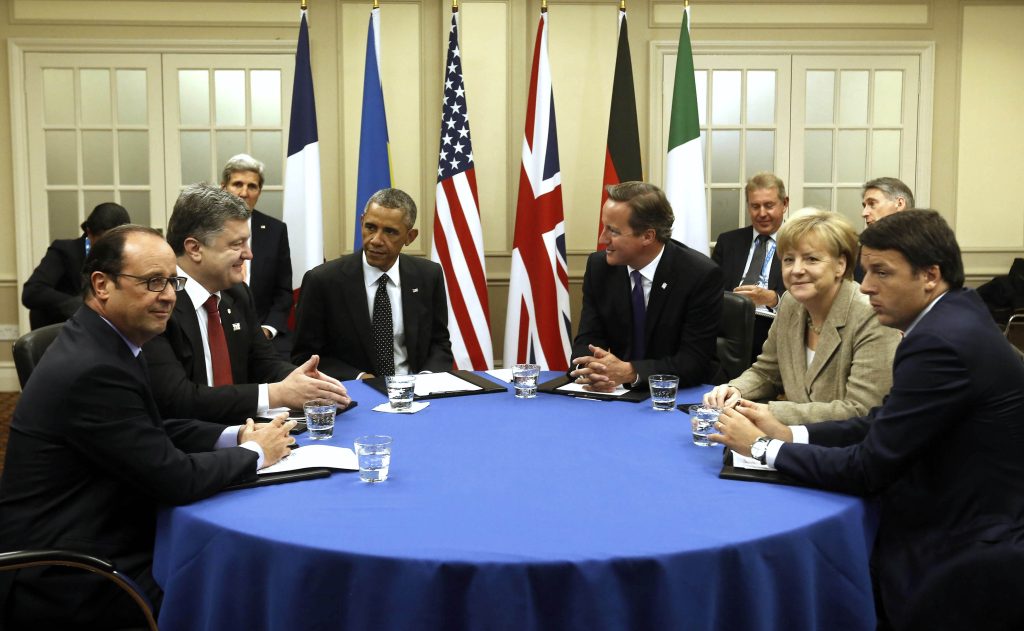
Redefining 2 percent as a floor, rather than as a ceiling, is one idea that is gaining traction.
While only seven of thirty allies met or exceeded the 2 percent goal by the end of 2022 according to the Secretary General’s Annual Report 2022 (SGAR 22), member states did far better on equipment expenditure, with only four of 30 falling short, none by very much.27See the list of allied spending in Table 3 on page 159 as well as Graph 3 on page 155 in NATO Secretary General’s 2022 Annual Report, https://www.nato.int/cps/en/natohq/opinions_212795.htm These achievements were buoyed by a decade of moderate to strong economic performance and low inflation. However, the return of large-scale war to Europe by the decree of the Kremlin is a significant factor as well. Defense spending among European members on NATO’s frontier with Russia is clearly outpacing member states in other regions of the continent.
Looking ahead, a possible recession in Europe related to growing inflation, persistent energy volatility, and the resources needed to rebuild Ukraine will again generate pressure to shrink defense spending. At the same time, the persistence of a brutal conflict on NATO’s borders—to include the need to replenish NATO matériel stocks given to Ukraine—and the determined revisionist actions of Russia and China are heightening awareness of the need to invest in deterrence. This last point is where NATO leaders should focus, even as economic realities and the controversial experience of the Wales commitment will limit the ceiling for a new spending pledge in Vilnius.
The Wales framework was driven by concerns from Washington about imbalances in spending between the United States and its European allies. Those concerns persist. In Ukraine, for instance, the US government has funded about $50 billion in security assistance. All others in the fifty-nation Ukraine Defense Contact Group have contributed approximately $15 billion.28See the Council on Foreign Relations article by Jonathan Masters and Will Merrow updated 22 February 2023: https://www.csis.org/analysis/aid-ukraine-explained-six-charts The U.S. has, by January 2023, committed to $46.6 billion in military aid (and $76.8 billion in aid overall, including financial and humanitarian aid). The top 20 other military aid providers committed $17.4 billion; however, they roughly equaled or exceeded the United States in aggregate financial and humanitarian aid (EU included). See https://www.cfr.org/article/how-much-aid-has-us-sent-ukraine-here-are-six-charts Nevertheless, Russia’s invasion of Ukraine and the tragic consequences for Europe mean the Vilnius debate on defense spending is starting from a higher floor and taking place in a more focused context than in Wales. NATO leaders should use these advantages to keep a positive trajectory on defense spending tied to credibly fulfilling DDA requirements. The war in Ukraine is a stark reminder that the failure to invest in adequate deterrence will drive security costs far beyond even healthy increases in annual defense budgets.
Success in Vilnius will require a commitment to increase defense spending as a necessary step to credibly implementing DDA requirements. Redefining 2 percent as a floor, rather than as a ceiling, is one idea that is gaining traction, although it will come with challenges to political cohesiveness when some allies inevitably miss the mark. Whatever the new benchmark, success in Vilnius will require NATO leaders to fully understand the costs of ambitious plans like DDA and NWCC and publicly commit to resourcing them. Success will also require agreement on the Madrid initiative to expand annual contributions to common funding related to improving defense and deterrence.
Addressing China at the Vilnius summit
China represents a new challenge to the Alliance. NATO leaders first registered their concern in December 2019.29See NATO’s London Leaders Meeting Declaration, December 4, 2019, Paragraph 6, https://www.nato.int/cps/en/natohq/official_texts_171584.htm Since then, they elaborated their apprehensions in summit declarations of 2021 (Brussels) and 2022 (Madrid), as well as in the new NATO Strategic Concept and in the secretary general’s NATO 2030 expert’s study. While China is not yet viewed broadly as a military threat to Europe, its actions are nonetheless destabilizing to transatlantic security and are driving the Alliance into active consultation.
Xi’s leadership of China has triggered four primary security concerns for the transatlantic community: growing Chinese control of critical European infrastructure under the People’s Republic of China’s Belt and Road Initiative (BRI); Chinese influence operations undermining NATO and European political cohesion; China’s expanding security cooperation with Russia, including support for the Kremlin’s territorial ambitions in Ukraine; and Xi’s announced challenge to the current rules-based international order. Each of these concerns also animates debates in the European Union about China, offering a promising opportunity for collaboration with the United States.
China’s control over the critical civilian infrastructure on which Alliance operations depend will be a primary concern at Vilnius. China has accumulated ownership stakes in twelve European ports, including the two largest, Rotterdam and Antwerp, and the massive Greek port of Piraeus.30The PRC does not appear to hold a comprehensive list of its overseas port investments. However, a National Public Radio (NPR) article notes an OECD study that maps twelve Chinese investment ports in Belgium, France, Germany, Greece, Italy, and Netherlands. (Other studies describe Chinese stakes in additional ports in Italy and Portugal.) See Johanna Karkissis, “Chinese Firms Now Hold Stakes in Over a Dozen European Ports,” in China Unbound series, NPR, October 9, 2018, https://www.npr.org/2018/10/09/642587456/chinese-firms-now-hold-stakes-in-over-a-dozen-european-ports Recent negotiations for part-ownership of Hamburg’s port may now be complete, alongside growing investment in Germany’s inland rail-river terminus at Duisburg.31Karkissis, “Chinese Firms Now Hold Stakes,” NPR; see also John Xie, “China’s Global Network of Shipping Ports Reveal Beijing’s Strategy,” Voice of America, September 13, 2021, https://www.voanews.com/a/6224958.html China’s extensive infrastructure holdings create the possibility of interfering with NATO, European Union, or national transport operations. China’s typical acquisition strategy involves significant Chinese lending to the host government to improve facilities. Financially desperate countries across Asia, Africa, and now Europe have invited Beijing’s debt-diplomacy exploitation.32Franklin D. Kramer, China and the New Globalization, Atlantic Council, January 20, 2023, https://www.atlanticcouncil.org/in-depth-research-reports/report/china-and-the-new-globalization/
Chinese state-owned firms Huawei and ZTE have gained substantial penetration in Europe’s 5G telecommunications sector. China’s 2017 National Intelligence Law requires Chinese companies to provide subscriber information to PRC intelligence agencies when directed.33See Bonnie Girard in The Diplomat. February 23, 2019, https://thediplomat.com/2019/02/the-real-danger-of-chinas-national-intelligence-law/ Generalized concerns over spyware and specific apprehensions about this law have caused a growing number of NATO allies to avoid Huawei systems, with both the European Union and NATO avoiding Chinese 5G equipment on their primary networks and encouraging their members to do likewise.34Oliver Noyan, “EU Countries Keep Different Approaches to Huawei on 5G Rollout,” EurActiv, May 19, 2021, https://www.euractiv.com/section/digital/news/eu-countries-keep-different-approaches-to-huawei-on-5g-rollout/ Divesting massive networks of such hardware can take years and incur high costs, as Germany is finding out as it prepares to strip Huawei components from its telecom networks.35Philip Alvares de Souza Soares, Dana Heide, Moritz Koch, and Dietmar Neuer, “Government Plans to Ban Huawei and ZTE in the German Network,” Handelsblatt, March 7, 2023 [in German] https://www.handelsblatt.com/politik/deutschland/5g-netz-regierung-plant-verbot-von-huawei-und-zte-im-deutschen-netz/29019480.html
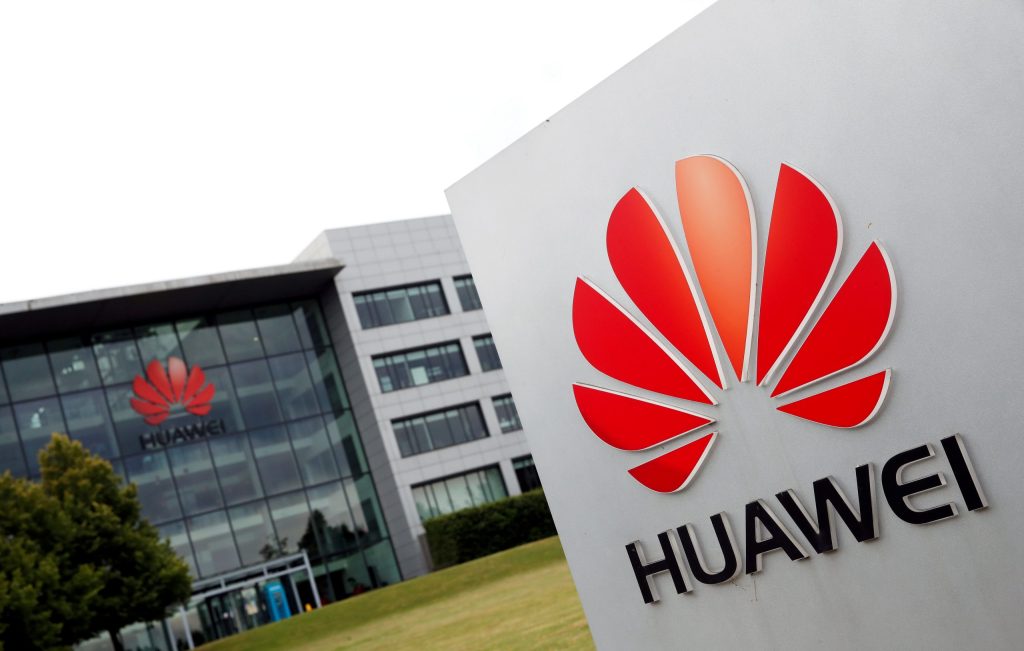
China’s control over the critical civilian infrastructure on which Alliance operations depend will be a primary concern at Vilnius.
Another concern has been Beijing’s political influence across Europe, notably in Central and Eastern Europe (CEE). In 2012, China launched its “China-CEE” or 17+1 program with a secretariat in Beijing and offices in each CEE country. Cultural centers were set up in CEE countries and Chinese tourism increased. However, when Lithuania opened trade relations with Taiwan, it precipitated a major diplomatic row with Beijing. In 2022, Lithuania and later Latvia and Estonia quit the 17+1 arrangement (while Greece has since joined). Some European countries (e.g., Hungary, Croatia) have succumbed to China’s BRI allure while others have tasted the pressure and rejected it. There is growing evidence that Europeans, tiring of China’s “wolf-warrior” diplomacy and hidden motives, are becoming more inclined to view Beijing skeptically.
The China-Russia “no limits” partnership has been watched closely since its rollout in 2022. The agreement has drawn Moscow and Beijing closer together in their mutual opposition to the United States and its allies.36Hans Binnendijk and Daniel S. Hamilton, Implementing NATO’s Strategic Concept on China, Section D, Atlantic Council, February 2, 2023, https://www.atlanticcouncil.org/in-depth-research-reports/report/implementing-natos-strategic-concept-on-china/ The relationship also is based on common political, economic, and military interests. China is buying more Russian energy while Western sanctions are in place and allowing Russia the wherewithal to sustain its revanchist agenda. Nonetheless, there have been signs that Beijing could have a moderating influence on Moscow with respect to Ukraine, such as in November 2022, when Xi told German Chancellor Olaf Scholtz that nuclear weapons should not be used in the conflict. Any possibility that Moscow and Beijing would fall out over Ukraine, however, was controverted when Chinese Foreign Minister Wang Yi visited Moscow37Amy Hawkins and Andrew Roth, “China and Russia Deepen Ties as Top Diplomat Tells Putin Crisis is ‘Opportunity,'” The Guardian, February 22, 2023, https://www.theguardian.com/world/2023/feb/22/china-russia-reaffirm-close-ties-putin-meets-top-diplomat-wang-yi on the first anniversary of the invasion amid rumors38“NATO Chief Urges China Not to Back Russia’s War in Ukraine,” CBS News, February 22, 2023, https://www.cbsnews.com/news/russia-ukraine-nato-chief-urges-china-not-to-back-russia-war/ that China would supply Russia weapons to sustain the war. Xi’s follow-on visit to Moscow,39“Putin, Xi Pledge Friendship but Talks Yield No Ukraine Breakthrough,” Reuters, March 24, 2023, https://www.reuters.com/world/europe/putin-meets-dear-friend-xi-kremlin-ukraine-war-grinds-2023-03-20/ punctuated by a Beijing-proposed framework40See “China’s Position on the Political Settlement of the Ukraine Crisis,” https://www.fmprc.gov.cn/mfa_eng/zxxx_662805/202302/t20230224_11030713.html for ending the conflict on terms favorable to the Kremlin, further clarified the depth of the partnership.
Xi’s “Chinese Dream”41Xi first described the Chinese Dream shortly after assuming power in 2012. He associates the Dream with the national rejuvenation he sees as returning China to a dominant position in world affairs, including security. See https://www.bbc.com/news/world-asia-china-22726375 global agenda is perceived in the West as a rising challenge to the rules-based international order long underwritten by the United Nations and Brenton Wood institutions but also anchored by NATO. That order must be protected from disruption as China’s influence grows, even as these foundational institutions must remain open to adapting to emerging geopolitical realities.42Henry Kissinger, “The Evolution of International Order,” and “Where Do We Go From Here?,” in Kissinger’s World Order (New York: Penguin Press, 2014).
In Vilnius, NATO will include a session with its Indo-Pacific partners: Australia, Japan, Korea, and New Zealand. A key topic of interest will be the potential for conflict with China over Taiwan, the most critical flash point in US-China relations. A Vilnius discussion on China should include thinking through the security implications for both the European and Indo-Pacific theaters of a US-China conflict over Taiwan. Moreover, NATO should discuss with its Indo-Pacific partners opportunities to include other nations in the region in dialogues with NATO, such as the Philippines, a US treaty ally.43Olivia Cretella, “NATO and the Philippines: The First Step Towards a Strategic Partnership,” Commentary, NATO Association of Canada (website), November 8, 2021, https://natoassociation.ca/nato-and-the-philippines-the-first-step-towards-a-strategic-partnership/
Success in Vilnius will require NATO leaders to take the next concrete steps in confronting the systemic challenge from China through intensified transatlantic-transpacific cooperation. Including NATO’s Indo-Pacific partners, while important symbolically, needs to be oriented around understanding the challenges of growing Russo-Sino alignment and the military, economic, and industrial implications of a war over Taiwan. To develop collective resilience strategies for mitigation, Allies should address the risks of Chinese investment in civilian infrastructure and share experiences about issues such as intellectual property theft, supply chain risks, and disinformation.
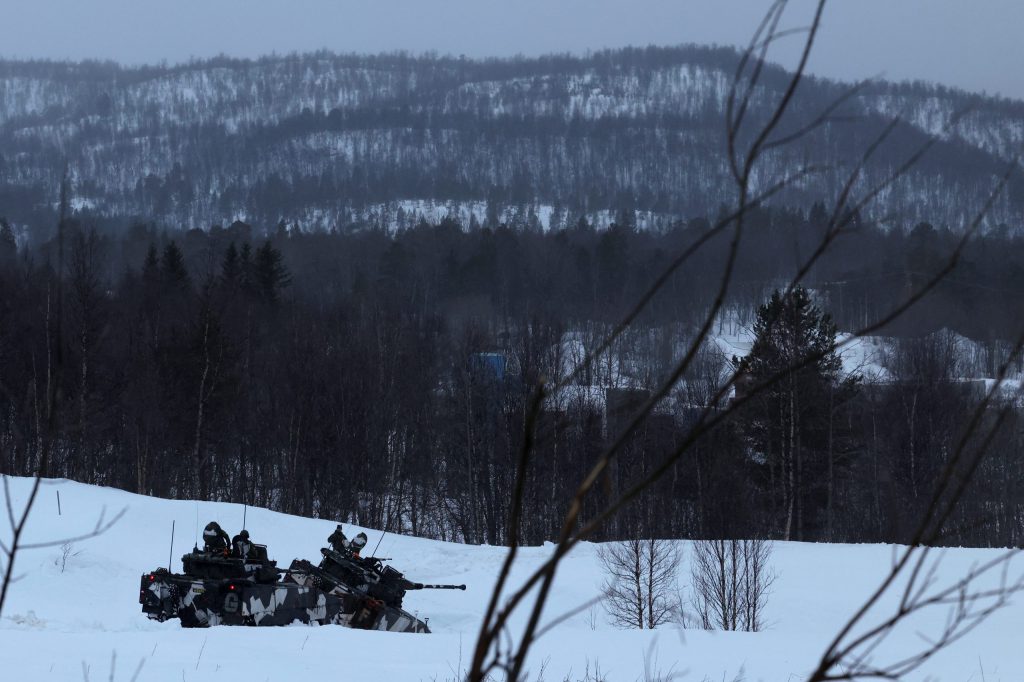
Allies will have other pressing business at the Vilnius summit, none more important than the formal accession of Sweden to NATO.
NATO’s other critical decisions at Vilnius
Allies will have other pressing business at the Vilnius summit, none more important than the formal accession of Sweden to NATO after Finland’s admission to full membership on April 4. The Alliance must overcome the gamesmanship of Turkey and Hungary, who have yet to approve Sweden’s accession, both for political reasons. Most observers believe that Swedish membership is a matter of when, not if, and there is reason to believe that an agreement between Ankara and Stockholm—the crux of the holdup—can be achieved in time for the Vilnius summit.44“Turkey’s NATO Talks with Sweden and Finland to Resume on March 9,” Reuters, February 27, 2023, https://www.reuters.com/world/europe/turkeys-nato-talks-with-sweden-finland-resume-march-9-2023-02-27/ Fast-tracked involvement in the core operational and defense planning activities of the Alliance—for example, contributions to NATO Enhanced Forward Presence missions, assignment of forces for regional plans, and full integration into the NATO Defense Planning Process—should be a priority for new member Finland and, once its membership is formalized, Sweden.
Finland and Sweden have been the strongest NATO partners, outpacing even other “enhanced opportunity partners”45See NATO’s Partnership Interoperability Initiative, https://www.nato.int/cps/en/natohq/topics_132726.htm because of geographic proximity and close operational planning with the Alliance after Russia’s annexation of Crimea. As Finland and Sweden graduate to membership, NATO will have fresh opportunities to energize its remaining 38 partnerships46NATO will have 38 partner nations (and 32 member nations) once Sweden joins Finland in matriculating to membership status. Note: 3 memberships – Afghanistan, Belarus, and Russia are presently suspended by the NAC for security reasons. but should choose a central focus for the future of partnerships. For example, as discussed previously, prioritizing the Indo-Pacific partners in the face of growing Sino-Russian cooperation and to better address security concerns related to China has merit. In this vein, NATO should examine the potential for a new partnership with the Philippines, a US defense treaty ally that has renewed its bilateral security and basing cooperation with Washington because of its concerns about China’s regional assertiveness. Alternatively, deepening partnerships with Switzerland, Austria,47Liam Hoare, “Austria – It’s Time to Join NATO,” Politico, March 3, 2023, https://www.politico.eu/article/austria-its-time-to-join-nato-russias-invasion-ukraine-leopard-2-tanks-gas-membership-raiffeisen-bank-kronospan-and-egger/ and Ireland is politically important within Europe. Identifying a pathway to membership for Ukraine was addressed earlier in this paper, and similar considerations for aspirants Georgia, Bosnia-Herzegovina, Moldova, and Kosovo can help deter further Russian threats to these countries.
Finally, choosing the next secretary general to replace Stoltenberg—or to again extend his tenure—demands serious reflection in wartime.48Lili Bayer, “A Wartime NATO Struggles to Replace its Chief,” Politico, April 5, 2023, https://www.politico.eu/article/war-nato-struggle-replace-jensstoltenberg-ursula-von-der-leyen/ Stoltenberg would leave a significant legacy, having guided NATO through the aftermath of Russia’s annexation of Crimea, multiple difficult political crises, and now the Russian war in Ukraine. Replacing his level-headedness, diplomatic skill, message discipline, and management acumen will be no easy task. The next secretary general must have a talent for managing NATO from the start in wartime, and a vision for the next era of the Alliance once the war in Ukraine is justly concluded.
Success in Vilnius will see Sweden welcomed as a formal member of NATO and Finland and Sweden quickly integrated into core Alliance business. It will require NATO to settle on a new cardinal direction for its partnerships while reinforcing its catalog of partnerships globally. It will require extending Stoltenberg, or replacing him with a candidate that can confidently manage a wartime alliance while communicating a vision for NATO’s next era.
Conclusion
Success at NATO’s Vilnius summit will require progress and achievement across the range of complex topics addressed in this report as well as a collection of lower-priority issues.
Above all, allies must be unwavering in their determination to end Russia’s aggression against Ukraine as soon as possible, and return Europe to a just and lasting peace. That will require more assertive actions by Ukrainian forces on the battlefield, backed by more aggressive political and material support from NATO allies. The Kremlin must see no alternative beyond withdrawal to its own borders and acceptance of Ukraine’s recognized sovereign territory. In this circumstance, NATO will have reaffirmed its vital role as a champion of the liberal world order.
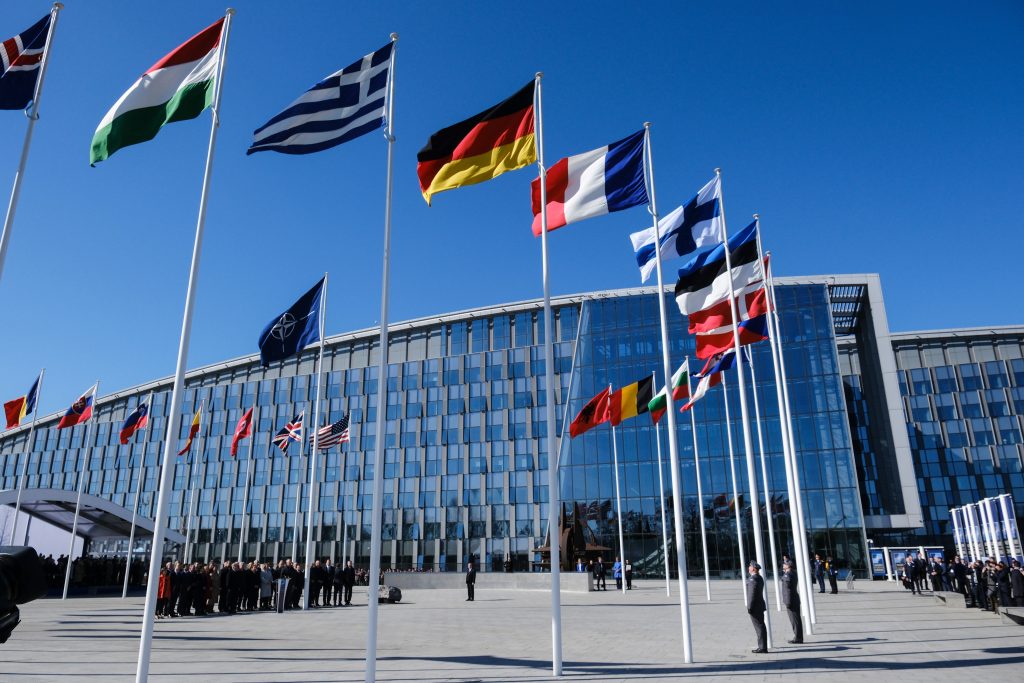
The Kremlin must see no alternative beyond withdrawal to its own borders and acceptance of Ukraine’s recognized sovereign territory. Then, NATO will have reaffirmed its vital role as a champion of the liberal world order.
Nearly as important is NATO’s commitment to strengthening defense and deterrence of Alliance territory through the New Force Model. That commitment must encompass a new defense investment pledge geared to credibly resourcing DDA requirements, with an emphasis on higher readiness, replenishing depleted stocks, and resilience. Thinking about the emerging capabilities needed for developing NATO’s Warfighting Capstone Concept will be important too.
The Vilnius summit must see NATO take its next concrete steps in identifying opportunities for transatlantic-transpacific cooperation in confronting the systemic challenge from China, including the worrying prospect of intensifying Russo-Sino cooperation. A successful summit will also see Sweden’s formal accession to NATO, a new cardinal orientation for partnerships, and a consensus decision about the next secretary general.
NATO is as united and strong as it has been in many decades as it works hard to end the gravest threat to European peace since the end of the Cold War. The Vilnius summit will be successful if it capitalizes on this unity and energy to take decisive action to restore peace, rebuild deterrence, and prepare for the challenges of the next era.
Charles Barry is a visiting research fellow at the Institute for National Strategic Studies at the National Defense University. Since 1990, he has assisted senior US and NATO officials in developing three NATO Strategic Concepts and preparing for 14 NATO summits. These views are his own and do not reflect those of the US Department of Defense or the National Defense University.
Christopher Skaluba is the director of the Scowcroft Center’s Transatlantic Security Initiative and formerly the principal director for European and NATO policy and the principal director for strategy and force development in the Office of the Secretary of Defense.
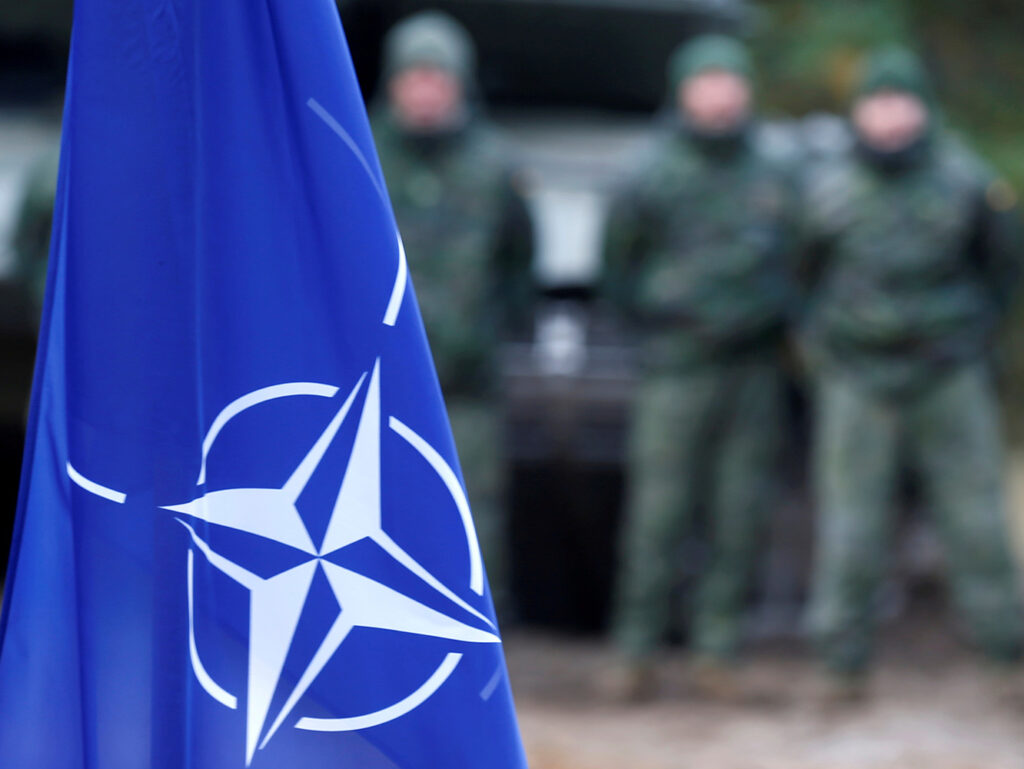
The Transatlantic Security Initiative, in the Scowcroft Center for Strategy and Security, shapes and influences the debate on the greatest security challenges facing the North Atlantic Alliance and its key partners.
Image: Caption and credit: Lithuania will host the next NATO Summit in Vilnius on 11-12 July 2023. Photo via Ministry of National Defense of the Republic of Lithuania / Alfredas Pliadis
